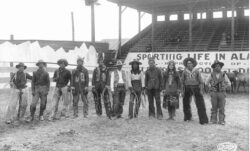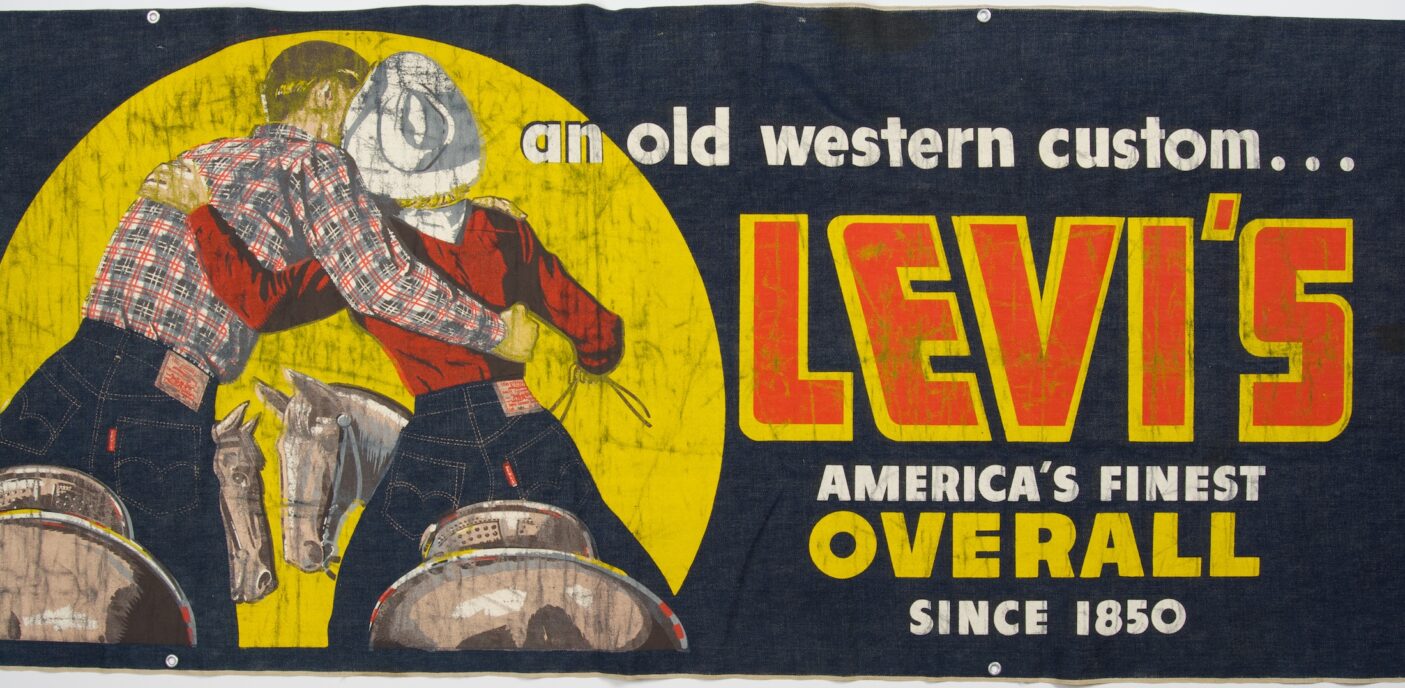With a deep-rooted legacy spanning over 170 years, Levi Strauss & Co. has a rich history filled with impressive tales, big and small. But how many of these tales are true, and how many have been embellished over the years? As company historian, understanding key company facts with accuracy is essential to being a trusted authority.
Today, I’m setting the record straight about the company’s history as it relates to two romantic — but mythical — tales about Levi Strauss & Co.
Levi, the Tailor?
Before hiring the first historian and establishing a company Archives in 1989, even LS&Co. itself perpetuated several tall tales about the company’s origins. One such tale was the story of Levi Strauss, an alleged tailor who sewed pants out of canvas sailcloth from ships.
In one retelling of the story, titled “Million Dollar Pants,” actor Red Buttons portrays Levi Strauss in the popular television series “Death Valley Days.” Dubbed a “true drama,” the show falsely depicted Levi setting up a canvas tent business before stitching up the first pair of Levi’s® for miners out of the same canvas.
Even Time magazine got it wrong in its article, “Iron Bottoms” from February 27, 1950, which described a 20-year-old Levi Strauss sailing into San Francisco in 1850 with a roll of canvas in his bag that he had a tailor cut a pair of trousers from.
Though Levi indeed sailed from New York to San Francisco, he was no tailor. Rather, he learned his trade from his two half-brothers, who had a dry goods wholesale business in New York, before leaving for San Francisco during the California Gold Rush to set up a dry goods business under his own name. He also arrived in San Francisco in 1853, not 1850.
Twenty years later, in 1873, after establishing a successful business, Levi spotted an opportunity and began selling patent riveted work pants.
Alkali Ike
Another legend that has made its rounds through LS&Co. history is that of Alkali Ike, a fictional prospector who was a character in the creation of the first pair of Levi’s® blue jeans.
In 1926, a company catalog recounted how Levi Strauss founded his company as a dry goods wholesaler. In the story, an unnamed tailor repairs Alkali Ike’s coat — only for Ike to return to the tailor to have the job done over again. In despair, “The tailor angrily picked up some copper harness rivets . . . and proceeded to rivet the corners of his pockets. Thus, was born the idea of copper riveted clothing.”
By contrast, in a 1980s poster entitled “Birth of the Blues,” Alkali Ike complains that the gold nuggets he carries around are tearing his pockets. Lucky for him, Levi’s® riveted pockets solve the problem.
Though the bit about tears in pockets and miners being some of the first to wear Levi’s® overalls hold a kernel of truth, Ike, his torn coat and gold nuggets are fiction.
It’s hard to trace how the myth of LS&Co.’s Alkali Ike started, since the Alkali Ike character appears throughout the 20th century in American Western and pop culture. In 1909, for example, performers in the show “Alkali Ike’s Wild West” headlined at the Alaska Yukon Pacific Exposition in Seattle, Washington.

Source: University of Washington, Special Collections
Alkali Ike was also the protagonist in a series of silent comedy films that kicked off in 1911 with the film, “Alkali Ike’s Auto.” Additionally, Alkali Ike made an appearance as a Marvel comic book character in the late 1940s, offering Tex Taylor and other characters his advice and knowledge of the West.

Uncovering the Truth
Thanks to patent litigation documents in the Archives, we know that it was tailor Jacob Davis, not Levi Strauss, who first conceived of the idea of adding rivets to pants when asked by a woman — not Alkali Ike — to create workpants for her husband. Davis, a customer of Levi Strauss & Co., was living in Reno, Nevada, at the time and making horse blankets, using rivets to fasten them. Upon the request, Davis was struck with the idea of adding the same rivets to workpants.
Davis wrote to Levi Strauss & Co. in 1872, sharing his riveted pant invention and inviting the company to join him in taking out a patent. Levi agreed to Davis’ proposal. On May 20, 1873, U.S. Patent 139,121 was granted to Jacob Davis and LS&Co. for an “Improvement in Fastening Pocket-Openings.” Thus, the original modern blue jean, the Levi’s® 501®, was born.
And that’s a fact.
For other Levi’s® tall tales revealed, see my stories “Levi Strauss & Co. . . . Since 1850?” and “Levi Strauss & Co. at Woodstock? . . . Not So Fast.”






